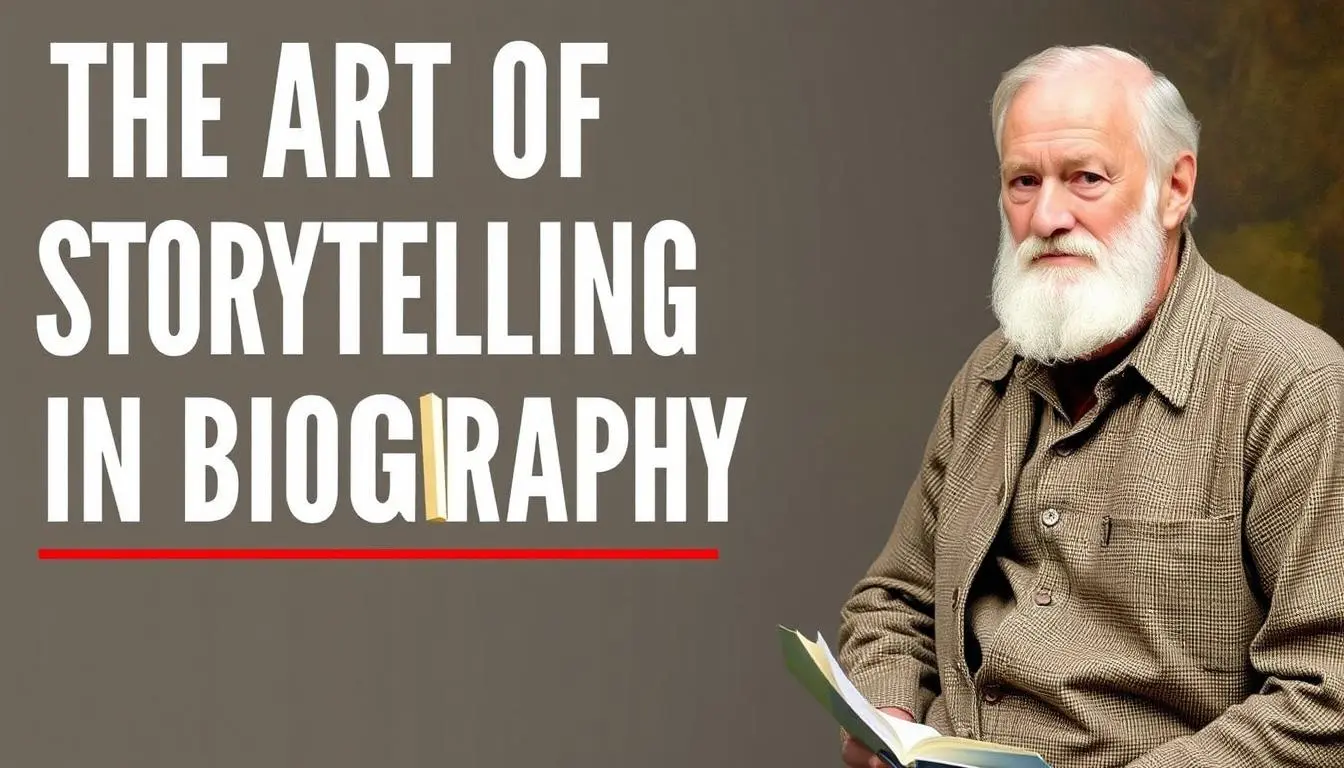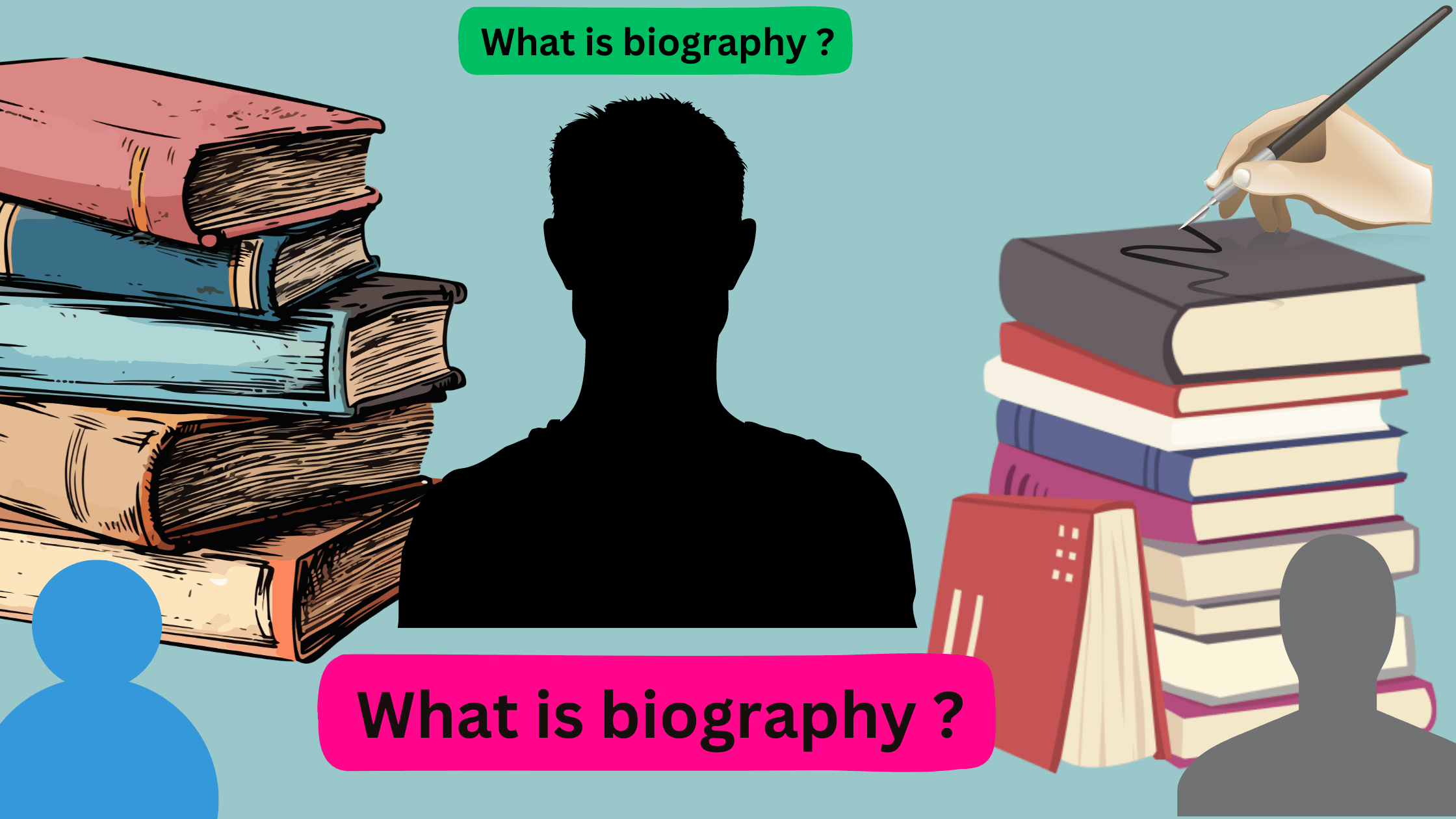The Art of Storytelling in Biographies
Biographies are so much more than just a collection of facts and dates. They have the power to transport us to different eras, cultures, and lives, captivating us with the extraordinary narratives of real people. But what makes a biography truly remarkable? It’s the art of storytelling.
In this article, we delve into the intricate craft of storytelling in biographies, exploring how authors bring their subjects to life and connect with readers on a profound level. Whether it’s through vivid descriptions, compelling dialogue, or skillful pacing, effective storytelling enhances the reading experience and leaves a lasting impact.
By infusing their narratives with emotion, authenticity, and a strong narrative arc, biographers can create a gripping story that resonates with readers long after they’ve turned the last page. We’ll also discuss the importance of structuring a biography coherently, balancing facts with narrative elements to keep readers engaged and immersed in the story.
Whether you’re an aspiring biographer or simply a lover of stories, the art of storytelling in biographies is something that can be appreciated by all. Join us as we unravel the secrets behind crafting captivating biographical narratives that touch the hearts and minds of readers.
The power of storytelling in biographies
Biographies are more than just a collection of facts and dates – they have the power to transport readers to different eras, cultures, and lives, captivating them with the extraordinary narratives of real people. The art of storytelling is what elevates a biography from a mere recitation of events to a deeply engaging and immersive reading experience.
At the heart of a compelling biography is the ability of the author to craft a narrative that resonates with the reader on an emotional level. By infusing their writing with vivid descriptions, compelling dialogue, and a strong narrative arc, biographers can create a story that not only informs but also inspires, entertains, and leaves a lasting impression. The power of storytelling in biographies lies in its ability to humanize historical figures, making them relatable and accessible to readers.
When done effectively, the art of storytelling in biographies can transport readers to a different time and place, allowing them to walk in the shoes of the subject and gain a deeper understanding of their experiences, motivations, and struggles. This emotional connection is what sets apart the truly great biographies from the merely informative ones, as readers are drawn into the narrative and become invested in the subject’s journey. By harnessing the power of storytelling, biographers can create a reading experience that is both enlightening and deeply moving.
Elements of a compelling biography
At the heart of a captivating biography is a well-crafted narrative that brings the subject to life and engages the reader on a deeper level. While the factual details and chronological events are important, it is the way in which these elements are woven together that truly distinguishes a remarkable biography from a merely informative one.
One of the key elements of a compelling biography is the development of a strong narrative arc. Just like a work of fiction, a biography should have a clear beginning, middle, and end, with a central conflict or challenge that the subject must overcome. This narrative structure not only keeps the reader engaged but also helps to contextualize the subject’s life and experiences within a larger historical or cultural framework.
Another crucial element of a compelling biography is the inclusion of vivid descriptions and imagery. By painting a vivid picture of the subject’s physical appearance, their surroundings, and the events they experienced, the author can transport the reader to a different time and place, allowing them to fully immerse themselves in the story. Effective use of sensory details, such as sights, sounds, and smells, can further enhance the reader’s connection to the subject and their world.
Dialogue and quotes are also powerful tools in the biographer’s arsenal, as they bring the subject’s voice and personality to the forefront, making them feel more real and accessible to the reader. Skillfully incorporated, these narrative elements can help to humanize the subject and provide insights into their thoughts, emotions, and motivations, which are essential for creating a truly captivating biographical narrative.
Researching and gathering information for a biography
Crafting a compelling biography requires meticulous research and a deep understanding of the subject’s life, times, and context. The biographer’s role is not just to present a chronological account of events but to uncover the nuances, complexities, and hidden stories that make their subject truly fascinating.
One of the first steps in the research process is to gather as much primary source material as possible, including personal letters, diaries, journals, and other firsthand accounts. These documents can provide invaluable insights into the subject’s thoughts, feelings, and experiences, allowing the biographer to capture their unique voice and perspective. Additionally, the biographer may need to consult secondary sources, such as historical records, biographies of related figures, and scholarly works, to gain a comprehensive understanding of the subject’s life and the broader context in which they lived.
Another important aspect of the research process is conducting interviews with individuals who knew the subject, whether they are family members, friends, colleagues, or contemporaries. These conversations can shed light on the subject’s personality, relationships, and the impact they had on those around them, adding depth and nuance to the biographical narrative. By listening to these personal accounts and anecdotes, the biographer can uncover the human story behind the historical figure, making their subject more relatable and accessible to the reader.
Throughout the research process, the biographer must also be mindful of the reliability and accuracy of the information they gather, cross-checking sources and verifying details to ensure the integrity of their work. This attention to detail and commitment to factual accuracy is essential for creating a biography that is both engaging and trustworthy, one that readers can rely on to provide a comprehensive and insightful portrait of the subject’s life.
Crafting a captivating narrative structure
Effective storytelling in biographies is not just about the quality of the writing or the richness of the details; it’s also about the way the narrative is structured and paced. A well-crafted biographical narrative should have a clear beginning, middle, and end, with a central conflict or challenge that the subject must overcome, just like a work of fiction.
One of the key decisions a biographer must make is how to approach the chronology of the subject’s life. While a strictly chronological approach can be effective in providing a clear and linear timeline, it can also feel static and lacking in dramatic tension. Alternatively, the biographer may choose to employ a more non-linear structure, jumping back and forth in time or focusing on specific events or periods that are particularly pivotal or revealing.
Regardless of the approach, the biographer must carefully consider the pacing and rhythm of the narrative, using techniques such as foreshadowing, flashbacks, and shifting perspectives to maintain the reader’s interest and keep them engaged. By strategically revealing information and building tension throughout the story, the biographer can create a sense of anticipation and suspense that keeps the reader turning the pages.
Another important element of a captivating narrative structure is the inclusion of thematic threads or motifs that run throughout the biography. These themes can provide a unifying framework for the subject’s life, helping the reader to make connections and draw deeper insights. Whether it’s the subject’s pursuit of a particular passion, their struggle with personal demons, or their role in a larger historical movement, these thematic elements can add depth and resonance to the biographical narrative.
Using vivid descriptions and imagery in biographies
One of the hallmarks of a truly engaging biography is the author’s ability to transport the reader to a different time and place, allowing them to fully immerse themselves in the subject’s world. This is achieved through the skillful use of vivid descriptions and imagery, which bring the narrative to life and make the subject feel more real and tangible to the reader.
By painting a detailed picture of the subject’s physical appearance, their clothing, their surroundings, and the events they experienced, the biographer can create a sense of immediacy and authenticity that draws the reader in. Sensory details, such as the sights, sounds, and smells of a particular setting, can further enhance the reader’s connection to the narrative, making them feel as if they are there alongside the subject.
Moreover, the effective use of imagery and metaphor can add depth and nuance to the biographical narrative, allowing the biographer to convey complex emotions, ideas, and experiences in a more evocative and memorable way. For example, a biographer might use the metaphor of a storm to represent the turbulence and upheaval in the subject’s life, or they might describe a pivotal moment using vivid, cinematic imagery to heighten the drama and impact.
By harnessing the power of descriptive language and imagery, biographers can create a reading experience that is both informative and deeply immersive, transporting the reader to a different time and place and allowing them to gain a more intimate understanding of the subject’s life and experiences.
Incorporating dialogue and quotes in biographies
Dialogue and quotes are powerful tools in the biographer’s arsenal, as they have the ability to bring the subject to life and provide readers with a direct window into their thoughts, emotions, and personality. When used effectively, these narrative elements can add depth, authenticity, and a sense of immediacy to the biographical narrative.
Incorporating well-chosen quotes from the subject’s own writings, speeches, or interviews can lend credibility and authority to the biography, allowing the reader to hear the subject’s voice directly. These quotes can also serve as touchpoints or anchors within the narrative, providing a sense of the subject’s unique perspective and lending emotional resonance to key moments or turning points in their life.
Dialogue, on the other hand, can be a powerful way to humanize the subject and make them feel more relatable to the reader. By imagining and reconstructing conversations between the subject and their contemporaries, the biographer can breathe life into the narrative, creating a sense of immediacy and intimacy that can be difficult to achieve through descriptive prose alone. Carefully crafted dialogue can also help to reveal the subject’s personality, relationships, and the dynamics at play in their world.
Of course, the use of dialogue and quotes in biographies must be handled with care, as the biographer must ensure that they are accurately representing the subject’s words and that any reconstructed conversations are based on sound research and evidence. By striking the right balance between factual accuracy and narrative storytelling, biographers can create a biographical narrative that is both informative and deeply engaging for the reader.
Balancing facts and storytelling in biographies
One of the key challenges in crafting a compelling biography is striking the right balance between factual accuracy and narrative storytelling. On the one hand, biographers have a responsibility to their readers to provide a truthful and well-researched account of their subject’s life. On the other hand, they must also find ways to bring that life to life in a way that is engaging, emotionally resonant, and accessible to the reader.
The art of balancing facts and storytelling in biographies lies in the biographer’s ability to seamlessly weave together the two elements, creating a narrative that is both informative and deeply immersive. This means carefully selecting and presenting the most relevant and impactful facts, while also infusing the narrative with vivid descriptions, compelling dialogue, and a strong sense of character and emotional depth.
Biographers must also be mindful of the ways in which they structure and pace their narratives, using techniques such as foreshadowing, flashbacks, and shifting perspectives to keep the reader engaged and to highlight the most significant events and turning points in the subject’s life. By carefully curating the facts and crafting a narrative that is both informative and emotionally resonant, biographers can create a reading experience that is both enlightening and deeply moving.
Ultimately, the goal of a biographer is not just to present a dry recitation of facts and dates, but to bring their subject to life in a way that captures the reader’s imagination and leaves a lasting impression. By striking the right balance between factual accuracy and narrative storytelling, biographers can create biographies that are not only informative but also deeply engaging and memorable.
Examples of successful storytelling in biographies
One of the most celebrated examples of successful storytelling in biographies is David McCullough’s “John Adams.” In this Pulitzer Prize-winning work, McCullough masterfully weaves together the personal and political life of the second president of the United States, creating a rich and compelling narrative that brings the reader into the heart of the American Revolution and the early days of the nation.
Through his meticulous research and vivid descriptions, McCullough transports the reader to the world of 18th-century America, painting a vivid picture of the people, places, and events that shaped Adams’ life and career. He skillfully incorporates dialogue and quotes to give voice to Adams and his contemporaries, allowing the reader to feel as if they are eavesdropping on the conversations and debates that shaped the course of history.
Another example of successful storytelling in biographies is Doris Kearns Goodwin’s “Team of Rivals,” which chronicles the life of Abraham Lincoln and the remarkable group of political rivals he assembled to form his cabinet. Goodwin’s narrative is a masterclass in weaving together the personal and political, using her deep understanding of the historical context and her gift for vivid, evocative writing to create a reading experience that is both informative and deeply engaging.
In her book, Goodwin brings the reader into the inner circle of Lincoln’s administration, revealing the complex web of relationships, rivalries, and alliances that shaped the course of the Civil War and the nation’s history. Through her skillful use of dialogue, character development, and narrative pacing, Goodwin crafts a biography that reads like a work of fiction, captivating the reader and leaving a lasting impression.
The impact of storytelling in biographies
Biographies have the power to transport us to different eras, cultures, and lives, captivating us with the extraordinary narratives of real people. But what truly sets apart the most remarkable biographies is the art of storytelling – the ability of the author to craft a narrative that resonates with the reader on a profound level, connecting them to the subject in a way that is both informative and deeply moving.
By infusing their narratives with vivid descriptions, compelling dialogue, and a strong sense of character and emotional depth, biographers can create a reading experience that is both enlightening and deeply immersive. Through the skillful use of narrative structure, pacing, and thematic elements, they can transport the reader to a different time and place, allowing them to walk in the shoes of the subject and gain a deeper understanding of their experiences, motivations, and struggles.
Ultimately, the impact of storytelling in biographies is not just about entertainment or education; it is about the power of the written word to connect us to the human experience, to inspire us, and to challenge our perspectives. By harnessing the art of storytelling, biographers can create works that not only inform but also transform, leaving a lasting impact on the reader and the world beyond the page.
Whether you are an aspiring biographer or simply a lover of stories, the art of storytelling in biographies is something that can be appreciated and celebrated by all. So, the next time you pick up a biography, immerse yourself in the narrative, and allow the power of storytelling to transport you to a world that is both familiar and extraordinary.


